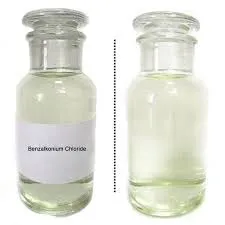poly aluminum chloride uses
The Uses of Poly Aluminum Chloride A Versatile Water Treatment Coagulant
Poly Aluminum Chloride (PAC) is a widely used chemical compound that plays a significant role in water treatment processes. As a coagulant, PAC is employed to enhance the removal of contaminants from water, making it safe for consumption and essential for various industrial applications. This article explores its uses, advantages, and the mechanisms through which it operates in different contexts.
What is Poly Aluminum Chloride?
Poly Aluminum Chloride is an inorganic polymer that results from the combination of aluminum hydroxide and hydrochloric acid. This compound exists in various forms, typically as a white or yellowish powder or liquid. Its chemical composition allows it to effectively interact with negatively charged particles in water, facilitating their aggregation into larger flocs that can be easily removed.
Key Applications of PAC
1. Drinking Water Treatment
One of the primary uses of PAC is in the treatment of drinking water. Municipalities utilize PAC to clarify drinking water by removing suspended solids, bacteria, and harmful pathogens. The effectiveness of PAC in forming larger aggregates allows for more efficient sedimentation and filtration processes, ensuring clean and safe drinking water for communities.
2. Wastewater Treatment
PAC is crucial in wastewater treatment facilities, where it assists in the removal of impurities before the water is released back into the environment or reused. Its role in coagulation and flocculation helps separate solids from liquid waste, reducing the load on biological treatment processes. This is particularly valuable in industrial settings that generate significant wastewater with high concentrations of pollutants.
In the paper and pulp industry, PAC is used as a retention aid to improve the quality of paper products. By enhancing the retention of fibers and fillers, PAC contributes to the efficient use of raw materials and reduces waste. Additionally, it aids in controlling the brightness and opacity of paper, which are essential for producing high-quality finished goods.
poly aluminum chloride uses

4. Cosmetic and Personal Care Products
The cosmetic industry also finds value in PAC due to its excellent binding properties. It is used in various formulations, including deodorants and antiperspirants, where it serves as astringents that help control moisture and sweat. Its ability to stabilize emulsions ensures that products maintain their consistency and effectiveness.
5. Food and Beverage Industry
Beyond industrial applications, PAC has a role in food and beverage processing, particularly in the clarification of fruit juices, wines, and other liquids. By removing suspended solids, PAC enhances the clarity and appearance of beverages, making them more appealing to consumers. It is crucial, however, to ensure that any application involving food and beverages complies with safety regulations.
6. Agriculture
In agriculture, PAC can be used as a coagulant in the treatment of livestock wastewater. It helps in the removal of harmful pathogens and solids, assisting in the recycling of water for irrigation or other agricultural purposes. Moreover, PAC can be beneficial in soil conditioning, promoting better water retention and nutrient uptake.
Advantages of Using PAC
The popularity of PAC in various sectors is attributed to its numerous advantages. Firstly, it is highly effective at low doses compared to traditional coagulants like alum, resulting in cost savings and reduced sludge volume. Secondly, PAC operates over a wide pH range, making it versatile for different water qualities. Additionally, it produces less residual aluminum in treated water, which is advantageous for health and environmental safety.
Moreover, PAC's ability to enhance flocculation leads to improved operational efficiency in water treatment processes. Its quick dissolution and rapid action can significantly reduce treatment times, ensuring that facilities can meet increasing demand without compromising on water quality.
Conclusion
Poly Aluminum Chloride is an essential chemical in modern water treatment and several industrial applications. Its versatility and effectiveness at removing contaminants make it a key player in ensuring clean drinking water, efficient wastewater treatment, and high-quality products in various industries. As global water treatment needs continue to grow, the importance of PAC in facilitating these processes is more significant than ever. By understanding and maximizing its benefits, industries can contribute to a cleaner environment and enhanced public health.
-
Pbtc Scale InhibitorPBTC: A Scale Protector for Industrial Water TreatmentNewsAug.05,2025
-
Organic Phosphonate: An Efficient Defender in the Field of Scale InhibitionNewsAug.05,2025
-
Hydrolyzed Polymaleic Anhydride: Green Pioneer in Scale Inhibition FieldNewsAug.05,2025
-
PAPEMP Polyamino Polyether Methylene Phosphonic Acid For SaleNewsAug.05,2025
-
Flocculant Water Treatment: A Pioneer in Purification in the Field of Water TreatmentNewsAug.05,2025
-
Benzyl Isothiazolinone: An Efficient and Broad-Spectrum Antibacterial Protective GuardNewsAug.05,2025





